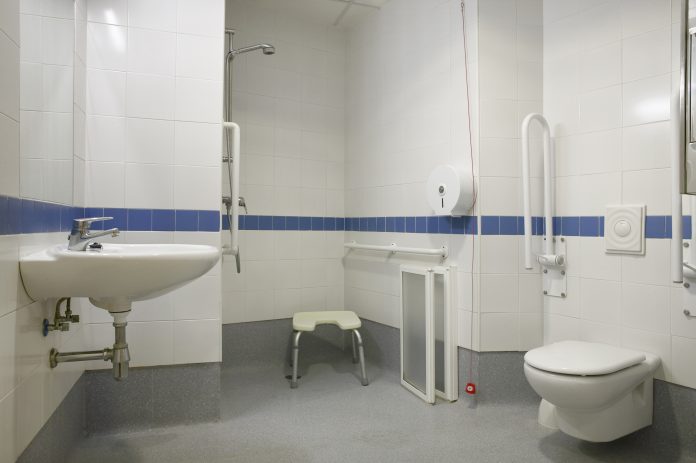The recent Changing Places Awareness Day brought two big announcements which have been welcomed by campaigners including disability charities
In our experience, the commitment to increase the number of Changing Places toilets is certainly a sign of progress, but it must be accompanied by an awareness of the things that can go wrong, and a determination to get them right from the outset.
Legislation changes
The first announcement was that changes will be made to legislation to make Changing Places toilets mandatory in new, large buildings in England from 2021. The government confirmed that shopping centres, supermarkets, sports and arts venues will be required to include at least one Changing Place, with facilities including hoists, changing benches and space for carers.
Helen Whately, the minister for care, told the BBC: “Compulsory Changing Places in new public buildings is a major step in reducing the health inequalities.
“All public spaces should cater for people with disabilities so they don’t have to suffer discomfort, embarrassment, or even injury without access to a Changing Place.”
Changing Places at service stations
The second announcement came from Muscular Dystrophy UK which, in partnership with the Department for Transport, confirmed that £1.27m will be spent on installing 37 more Changing Places at service stations across England.
The result will be that 87 of the country’s 118 service stations will have a fully accessible Changing Places toilet as part of a government transport strategy which aims to provide equal access to transport by 2030, with assistance if physical infrastructure remains a barrier.
Chris Heaton, the transport accessibility minister was quoted by the Changing Places Consortium. He said: “I want everyone to have the confidence to travel by any means so it is incredibly important for us to work with Muscular Dystrophy UK to provide Changing Places facilities at the majority of service stations in England.”
As welcome as the announcements are, some people will have their own questions about why it has taken so long to make the provision of Changing Places compulsory in new buildings, after all the Consortium was founded in 2005.
Changing Places in existing buildings
Further, there appears to be no update in the announcement about increasing the provision of Changing Places generally in existing buildings, although they are required in the event of a major refurbishment.
The sort of premises which will be covered by the new legislation are “places of assembly, recreation and entertainment” with a capacity of 350 or more such as art galleries, cinemas, concert halls, conference centres, colleges and universities, libraries and museums, theatres, places of worship and hotels that include leisure facilities.
The list also includes shopping centres or retail parks with gross floor area of 30,000 square metres or more, retail premises of 2,500 square metres or more, sport or leisure buildings of 5,000 square metres or more and stadia, theme parks, zoos or exhibition centres with a capacity above 2,000.
The government says around 250,000 people with profound and multiple learning disabilities will benefit as well as other people with such physical disabilities as spinal injuries, muscular dystrophy and multiple sclerosis.
Our observations are that although the new announcement doesn’t expand on how it proposes to increase the availability of Changing Places in existing buildings, nor does it give a reason why an owner or tenant of a property shouldn’t make such an improvement anyway.
We would also highlight the need to plan the installation of Changing Places properly, whether in a new building or as part of a refurbishment. We’re reminded of an access audit which we carried out at a university where an accessible WC was retro-fitted with a view to creating a changing places facility.
The fact that the room was nowhere near the minimum size should have been picked up, but the main issue was that a disabled person would find it extremely difficult to get into the room in the first place because of clutter and the awkward position of an entrance door set at an angle of about 45 degrees to the adjacent wall. It’s common sense that the design has to ensure that disabled people can actually get into the room.
Also, some designers make the mistake of assuming that an adult Changing Places facility suits everybody, but it doesn’t because different users have different requirements and if the facility is for assisted use only it’s not suitable for independent use.
As ever, if in doubt you should always get a professional involved because the cost of their input will be a lot less than the price of any remedial work.
Ian Streets
Managing director
Tel: +44 (0)1482 651101
LinkedIn: Ian Streets














